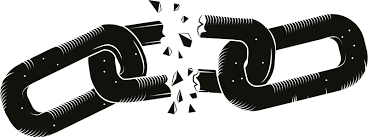
Targeted lifecycle marketing is imperative for marketers today. Technology has created a demand for a seamless, omnichannel customer experience, but we’ve noticed the experience isn’t becoming more seamless and personalized, but disparate and broken. The way technology is created has caused these problems, and to connect the dots now, we’re up against organizational resistance.
CMOs nowadays are spending more money on technology, on multiple point solutions, and each one of those point solutions requires a specialist. So the marketing organization has become siloed with different specialists for search, digital advertising, social marketing, website, catalog, and store. It’s hard to get them all working together, because everybody’s busy, keeping their head down with day-to-day tasks. That’s the part of the experience that’s broken.
Although this problem is internal, it manifests itself in the customer journey. Below are two examples of what the broken customer experience looks like, in the digital and direct worlds:
Digital
On the digital side, we have this really powerful cookie, and as a consumer, you’re being chased around the internet. For example: There’s a brand of earplugs that allow you to hear the crispness of the music at concerts, while protecting your eardrums. As a frequent concert-goer, it’s brilliant, and it’s targeted, and it’s relevant to my lifestyle. The problem is that it’s everywhere now. It’s not just in the context of when I’m listening to music or when I’m buying tickets. Everywhere I go online, there they are.
At one level, it’s dead on. At another level, it’s too much, and basically people begin describing it as creepy. Let’s just say they had these earplugs at an event where I see some live music, and I actually buy the earplugs. They will continue to chase me around online. This is a normal occurrence; you’re getting chased around online, you actually go to the store and buy something, and yet they continue to chase you. It goes over the top and it’s creepy.
Direct Marketing
Let’s think about direct mail, like a catalog. I’ve bought from a brand 10+ times, so I am considered a very good customer. But for whatever reason, I did not purchase in 2017. So they haven’t seen me in 18 months. But because of the way catalogs are siloed within the constraints of their budget, they can’t afford to send me a catalog anymore.
So I’m a 10+ customer, and just because I haven’t purchased in a while, I stopped receiving the catalog. So now I’m just getting the email blast every day, and I’m getting it about all the product lines. If you looked at my 10 purchases, I bought in the same category seven times, and then three times I went to another category, and I might have even had one time where I changed genders. None of that is being leveraged in how I’m being communicated to. I get every email about everything all the time. And so, even though I’m a really good customer, I get no specialized treatment, and I slowly fade away. And as I fade away, the chance of me ever seeing another catalog gets slimmer and slimmer.
How to Fix the Broken Experience
To fix this broken experience, marketers need to be looking at their customer data. To reference the direct marketing example above, let’s say my average lag between spend across those 10 purchases was 160 days. As I approach that 160 day point, marketers should be speaking to me in a different way. If I go beyond that point, a marketer should reach out, find out what’s wrong.
We aren’t doing that, instead putting a lot of focus on acquisition and prospecting. Marketers invest tons of money to get somebody to buy the first time, and then we throw them in the blast and treat them all the same. That’s broken. And we have the technology, we have the data, we have the analytics to change it. If we don’t have that holistic view of the customer yet, we need to get it. But then we basically have to start acting on it.
The Power of Lifecycle Marketing
Lifecycle marketing is a way to develop a personalized, one-to-one relationship with a customer. Customers interact with the brand as usual, and they receive messaging that is personalized and relevant to where they are in the lifecycle. The goal is bigger than reporting revenue from a single email blast; by growing the customer relationship, you are growing loyal customers with a higher future value. To do this correctly, you first need the single customer view, so customers receive the same messaging across all channels. Then, you need to stop sending email blasts. These blasts interrupt the flow of conversation and put holes in the customer experience.
Ideally, there will be a point in the future where a brand will have a fully flushed out lifecycle strategy with a campaign for every type of customer, at every lifecycle stage. If you suppress customers from blast emails while in a lifecycle campaign, we will arrive at a point where there are no customers that qualify for the brand’s blast emails. Once we hit this point, we know the experience is on its way to being fixed – holistic, relevant, and rewarding for the customer.
Augie discusses the broken customer experience and the power of lifecycle marketing on CRM Radio; click here to listen to his podcasts.



